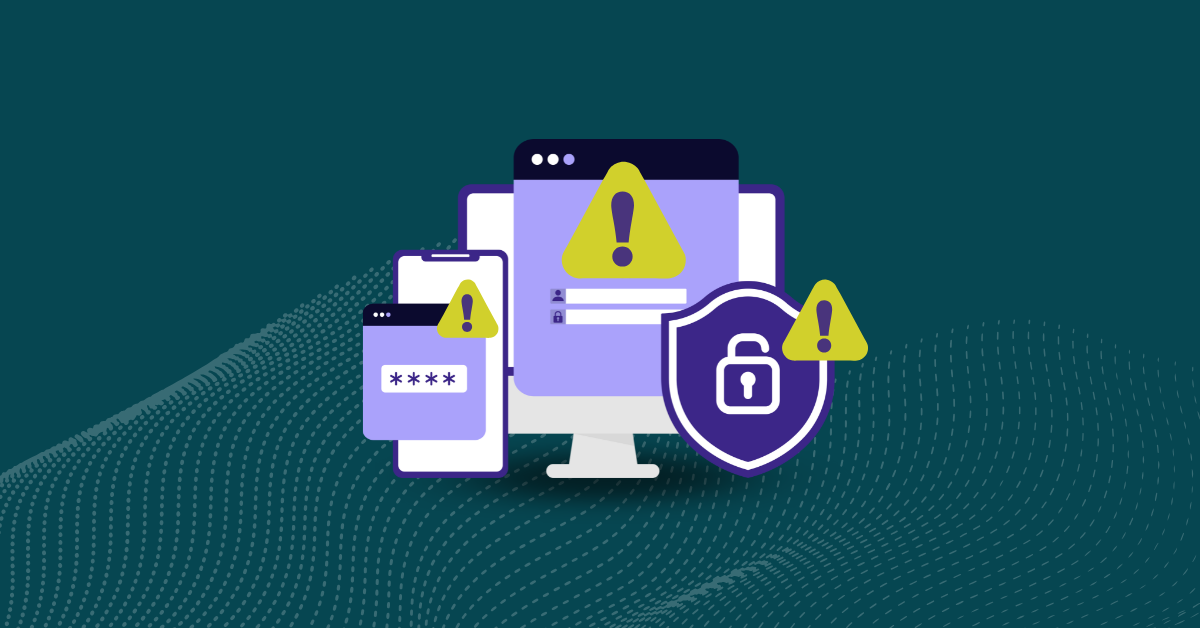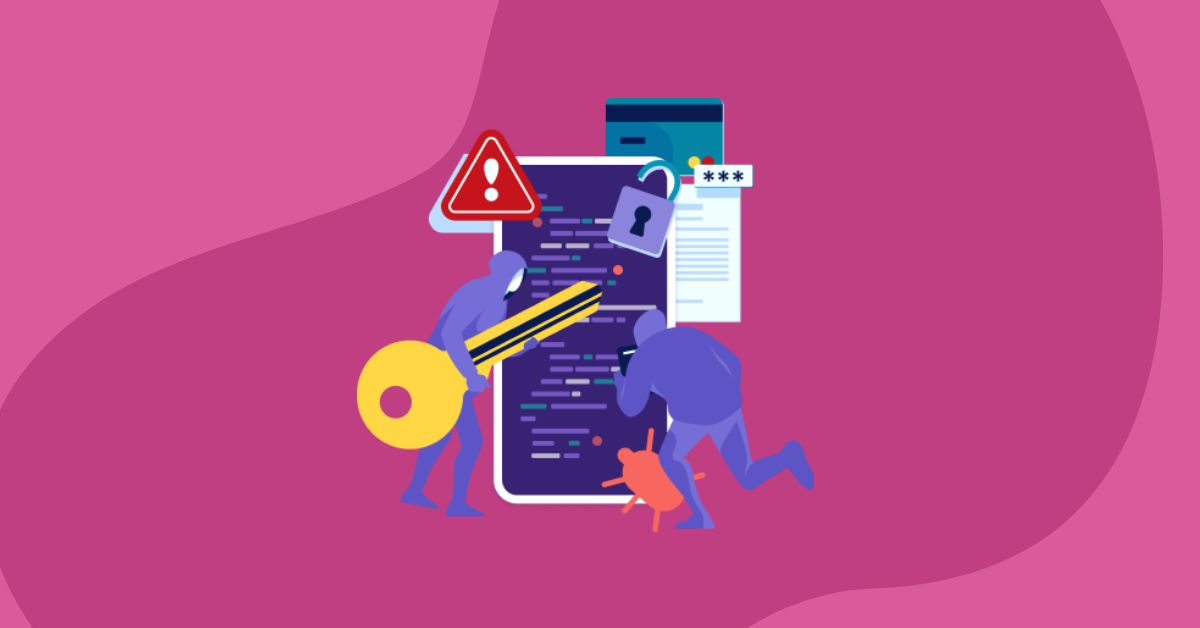

Modern app development is fraught with potential risks that can derail projects, inflate budgets, and compromise quality. Recognizing these risks early on and implementing effective solutions is key to ensuring the smooth execution of your projects. Let’s look at some of the most common risks of mobile app development — and how to mitigate them.
While you may hope that once the specifications have been delivered to the developers, the software application will be built just how you want it. Unfortunately, the development team’s assumptions may not match yours without consistent, ongoing communication.
Miscommunication within development teams and with stakeholders can lead to misaligned objectives and expectations, which can cause conflicts and slow down development.
Differences in interpretation on the development side will lead to unexpected changes in product performance, wasting resources as the team moves in the wrong direction and has to go back and fix the problem.
Stakeholders can also fall out of the communication loop. They may be inadvertently excluded from communications and meetings, or they may choose to remain on the sidelines and expect the development team to work without input.
Fostering an environment of open communication is vital to solving these issues. Hold regular meetings to maintain alignment and address issues proactively. The longest you should go without at least one touchpoint is two weeks.
For example, if your team uses Agile and Scrum, stakeholders should participate in the sprint reviews that typically occur every two weeks. The goal is regular project monitoring to eliminate surprises.
Be sure to include key contributors from across the organization. Marketers need to keep up with development to ensure a smooth roll-out, and designers need to ensure that the ongoing development aligns with design considerations. If representatives can’t attend the meetings, get their input through sharing regular progress reports and encouraging interaction in other areas.
If you are working with an external development team, establish a technical liaison to keep communication flowing. Make sure you set aside time for managing an outsourced project, and never assume the external vendor is moving in the right direction. For the most effective mobile app development risk management, give as much attention to communication with external vendors as you do to your internal teams.
If you have a code repository that would help the external developer, your liaison can point the way so the project isn’t slowed by lack of access. As the liaison builds their role, remember how your organization communicates with a vendor. These are excellent tips for any manager and group:
Don’t make assumptions: Eliminate shorthand in your communications because you think the recipient knows what you mean. Making people guess what you want leads to mistakes and inefficiencies, as well as the potential for improvement.
Choosing the wrong platform or technology stack can limit the app’s performance, scalability, and user reach. While some organizations pick the platform they have always used, others choose the one their developer is familiar with. There is no one-size-fits-all selection.
You must choose whether you need a native, cross-platform, or responsive app. Every platform has advantages and disadvantages. Decide which is best for you by considering user group management needs, integration requirements, and any mobile app security risks.
Conduct thorough research and consider factors such as target audience, requirements, app development risks, and future growth potential. Then, prototype and test the different platforms to determine the best fit. Ask your development team for input on the best platform for your project, check user reviews, and research when researching your platform choices. Choose a solution that has the technical advantages you need with acceptable limitations.
Other considerations include:
Neglecting post-launch activities, such as marketing, user support, and maintenance, is a significant app development risk that can lead to a failure to sustain user interest and engagement.
Your responsibility for the app doesn’t end with its development. Early planning should determine how you achieve rapid, strong ROI with the app. Just because you think the application is brilliant doesn’t mean users will find or use it optimally.
Product launches are not an ending but a beginning. You need to look at the application as a holistic experience. Don’t assume that the future will bring only a few bug fixes or new features.
Develop a comprehensive post-launch plan that includes marketing strategies, user support frameworks, and regular updates. Monitor user feedback and analytics to guide continuous improvement efforts.
During early product planning, you always need to consider post-launch sustainability and ROI. The post-launch plan looks at the supporting workflows needed for a successful product.
Every part of your organization plays a part in the post-launch phase:
Your post-launch plan should address other areas, such as marketing automation and app monetization.
Keep in mind that your approach depends on your user base. Post-launch execution varies between marketing an application to new users and rolling it out as a productivity tool to internal users. However, there is some overlap in terms of promotion and support. Both internal and external user bases are critical sources for usability studies and feedback. User prompts, surveys, app store reviews, and incentives for feedback are all valuable methods of improving the app throughout its lifecycle.
As you drive toward launch, keep all parties in the loop to prepare for support and minimize post-launch risks. Your post-launch plan must drive regular, tangible progress that delivers measurable ROI and app adoption after the initial launch.
You can break the goals of a project down into three basic categories: good, fast, and cheap. A great product will have two of these things, but you’ll never get all three.
A small prototype can be good and cheap since you can invest more after receiving feedback. But if you are presenting to investors, you might choose to be fast and cheap to achieve financing.
Trying to be all three can get you in trouble. Imagine realizing that half of the project is complete, but you don’t have the right people to execute it properly. You’re probably going to be late and over budget. And what if your organization lacks the management-level expertise to understand the relevant technology? Planning becomes a roadblock.
Careful planning and resource management are key elements for your team. You’ll need to prioritize project elements, leverage external expertise through outsourcing, and employ project management tools to optimize resource allocation. But at the end of the day, you can only do so much with the people you have.
Outsourcing and augmenting your staff with contractors is a cost-effective way to ensure you have all the resources you need to execute on deadlines and budget allocations to produce a successful application. You can execute on deadlines and budget allocations.
Bringing in outside talent can add expertise in key technologies to your in-house team. Perhaps you need to bolster project management. In that case, bring in a management partner for your custom development project. As you begin initial planning for app development, perform a detailed evaluation of the developers needed to execute your design. Appropriate staffing has a substantial impact on your overall project timeline.
Staff augmentation is your best choice if you need specific developers or expertise for an undetermined period of time. However, if you need people to take overall responsibility for executing the development of a particular project, outsourcing is a cost-effective and time-efficient selection.
As you research the best staff augmentation or outsourcing group, look at reviews from others who use the group. Familiarize yourself with the group’s technical and domain expertise. You want people with experience in the most relevant, innovative technologies to build and implement your brilliant new app.
Scope creep is an app development risk when new features or requirements are added to a project without equivalent increases in resources, time, and budget. It can lead to delays, budget overruns, and diluted project objectives.
Implementing a robust project management framework can help manage the issue. Clear communication of project goals, rigorous change control processes, and stakeholder involvement throughout the project lifecycle are crucial steps in managing and mitigating scope creep.
Security breaches can compromise user data and trust, leading to significant reputational and financial damage. To mitigate mobile app security risks, adopt a security-first approach throughout the development lifecycle. Conduct regular security audits, employ best practices in secure coding, and use tools to identify and mitigate vulnerabilities early. Tools like code obfuscation will help you harden your app against a wide range of security risks.
As applications grow, they may struggle to handle increased loads effectively, leading to performance degradation and a poor user experience.
Always start the development of new software with sustainability in mind. Utilize scalable architecture patterns and technologies, conduct load testing, and plan for future growth to ensure your application can handle increased demand.
Identifying the most effective way to monetize an app can be challenging, as it will impact the project’s overall success and sustainability.
Research and identify a monetization strategy that aligns with your user base and market trends. Consider multiple revenue streams, such as in-app purchases, subscriptions, and advertising, to find the right balance for your app.
Ensuring the quality and reliability of applications amidst tight deadlines and complex development environments is a significant challenge.
Implement a comprehensive testing strategy that includes automated testing, continuous integration, and a robust QA process. Leverage tools and platforms that facilitate testing and feedback loops to maintain high-quality standards.
Kiuwan offers a comprehensive suite of tools designed to address many of the challenges and risks of mobile app development. From security vulnerabilities to code quality and compliance, Kiuwan’s solutions enable developers to automate and streamline critical aspects of the development process. By integrating Kiuwan’s tools into your workflow, you can
There is no path to the perfect product plan because application development is complicated. You cannot account for every contingency. However, you can plan carefully and test as much and as early as possible to discover and resolve issues and mitigate risk. The earlier you can identify a delay, issue, or opportunity, the more leverage you have for completing a successful project.
Proactive planning lets you dynamically alter development details to achieve your core goals. Application security testing is a crucial part of planning and development.
Kiuwan provides the best security tools to ensure secure custom application development. Our solutions integrate security into your DevOps process to bake security into the app. By finding and solving security issues throughout development, you’ll reduce your risk.
Identify and remediate mobile app security risks with fast and efficient scanning and reporting. Request a free trial of Kiuwan today to improve your mobile app development risk management.


